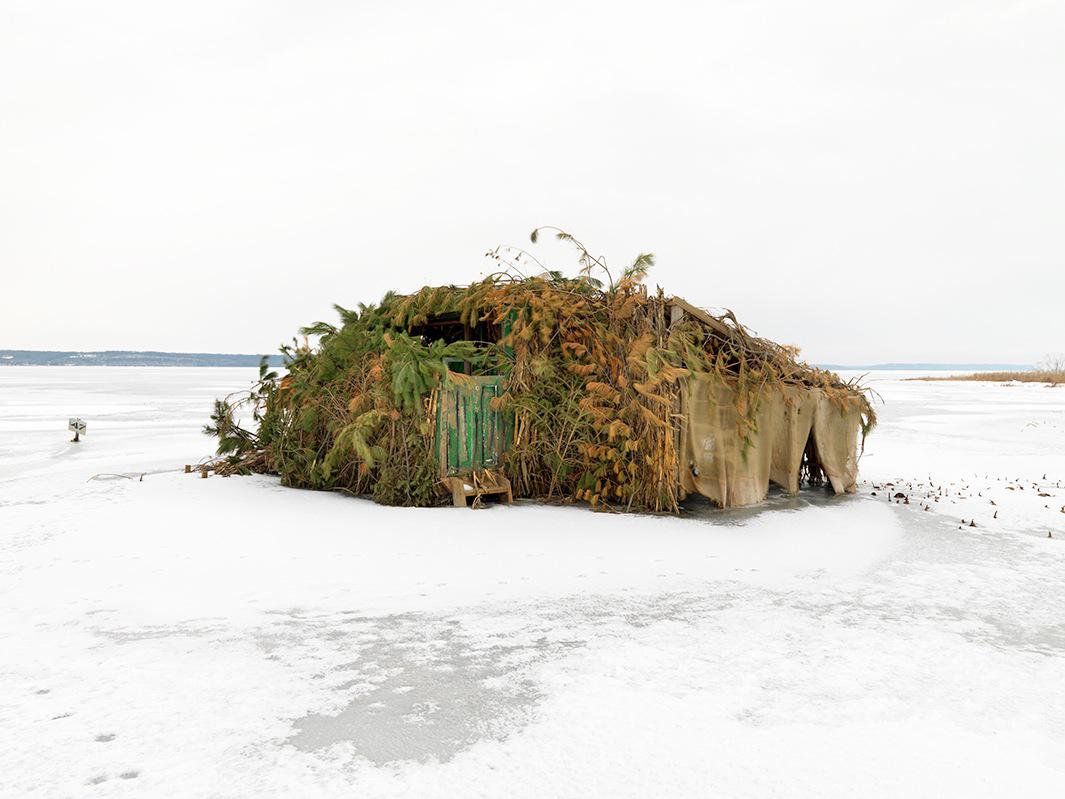At first glance, there’s not much to a duck blind, a structure that hunters use to camouflage themselves while waiting for birds to fly overhead. They’re humble, often small structures made of simple materials—wood, paint, nails, netting, and bits of brush or grass—and are built with efficiency in mind more than comfort or architectural flair. But, as Wade Bourne wrote in Ducks Unlimited, “There’s a lot more in a duck blind than meets the eye. There’s hard work, ingenuity, and the hopes and dreams of the hunter or hunters who built it.”
That’s what Dave Jordano discovered in the winter of 2008 when he came across a bunch of duck blinds while traveling by the Mississippi River near Illinois’ border with Wisconsin. The Chicago-based photographer had been navigating the northern part of the state looking for “out-of-the-way places, things I found odd or eccentric or quirky, places that were indicative of rural life in a sort of odd way” for his series, “Prairieland.” Intrigued by the homemade structures, Jordano spent a single day hiking along the ice photographing the duck blinds.
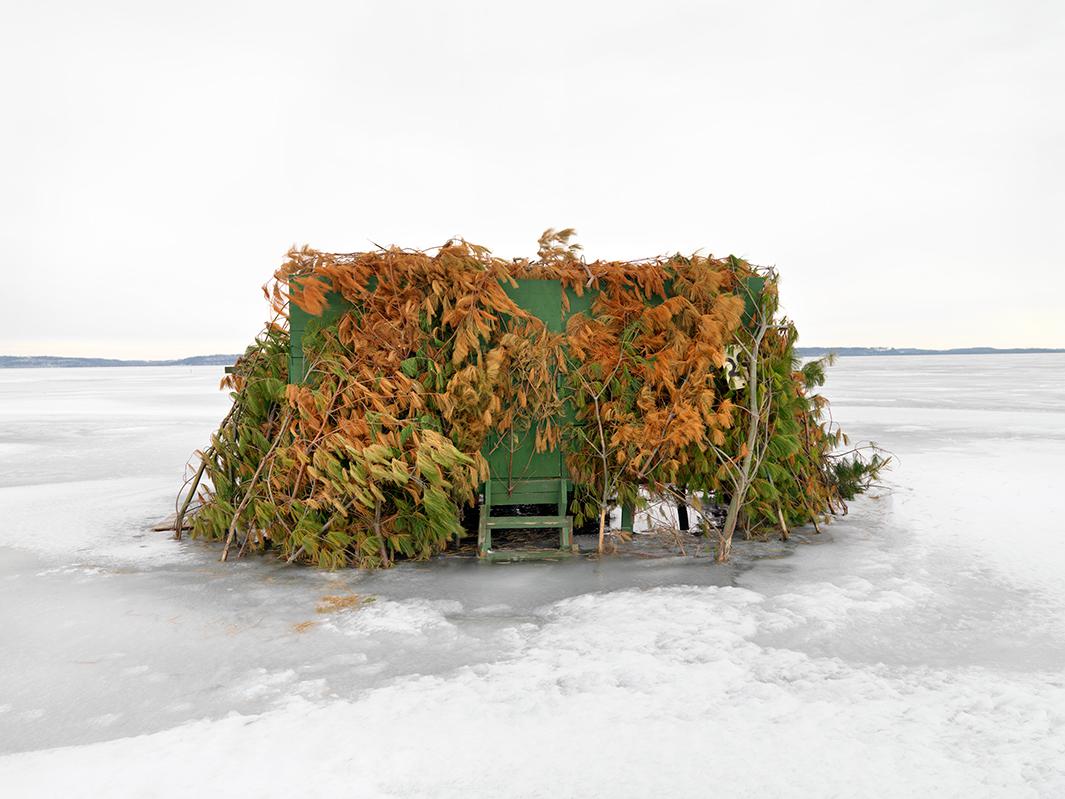
Dave Jordano

Dave Jordano
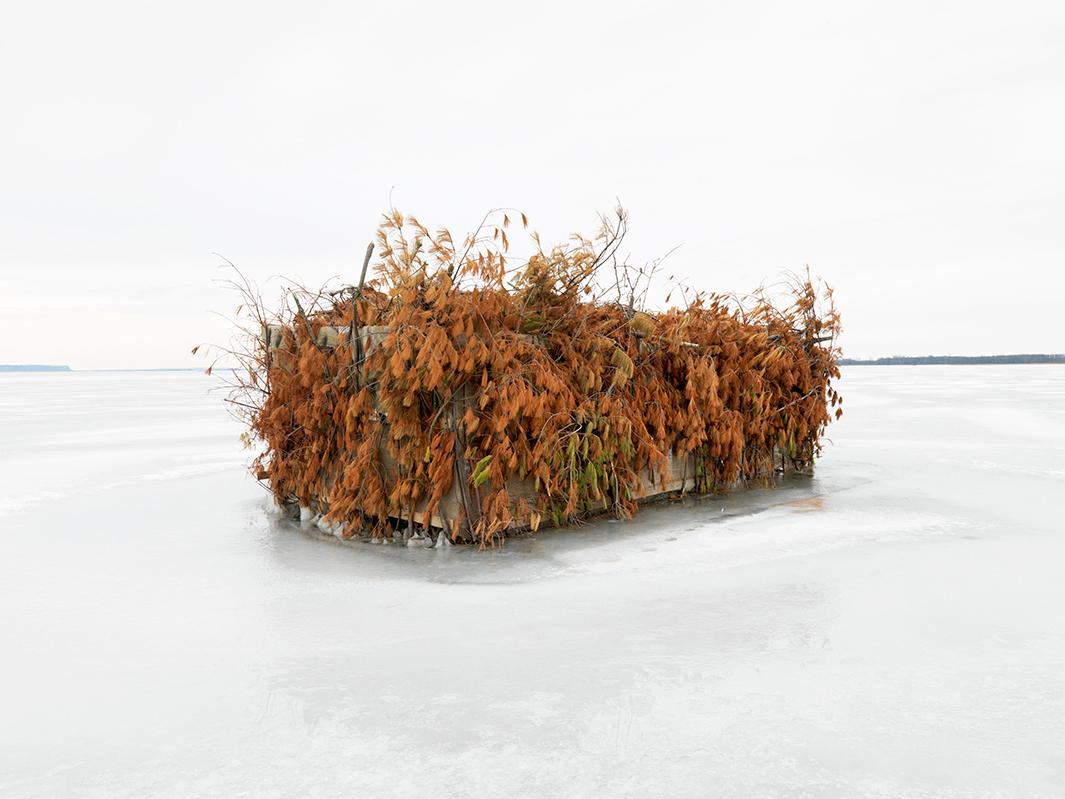
Dave Jordano
“I was just really taken by the visual variety between all of them—the way each hunter picked certain materials to make their blind with and how they all came out looking a bit different,” he said. “It’s an interesting take on their own creativity and resourcefulness.”
Since it was not duck hunting season, the duck blinds were unoccupied. Some of the duck blinds were padlocked, but a few were open. Inside, Jordano found empty bottles and beer cans, shell casings, and food wrappers. Often, there would be a bench or an ashtray there too. Many of the blinds were completely empty.
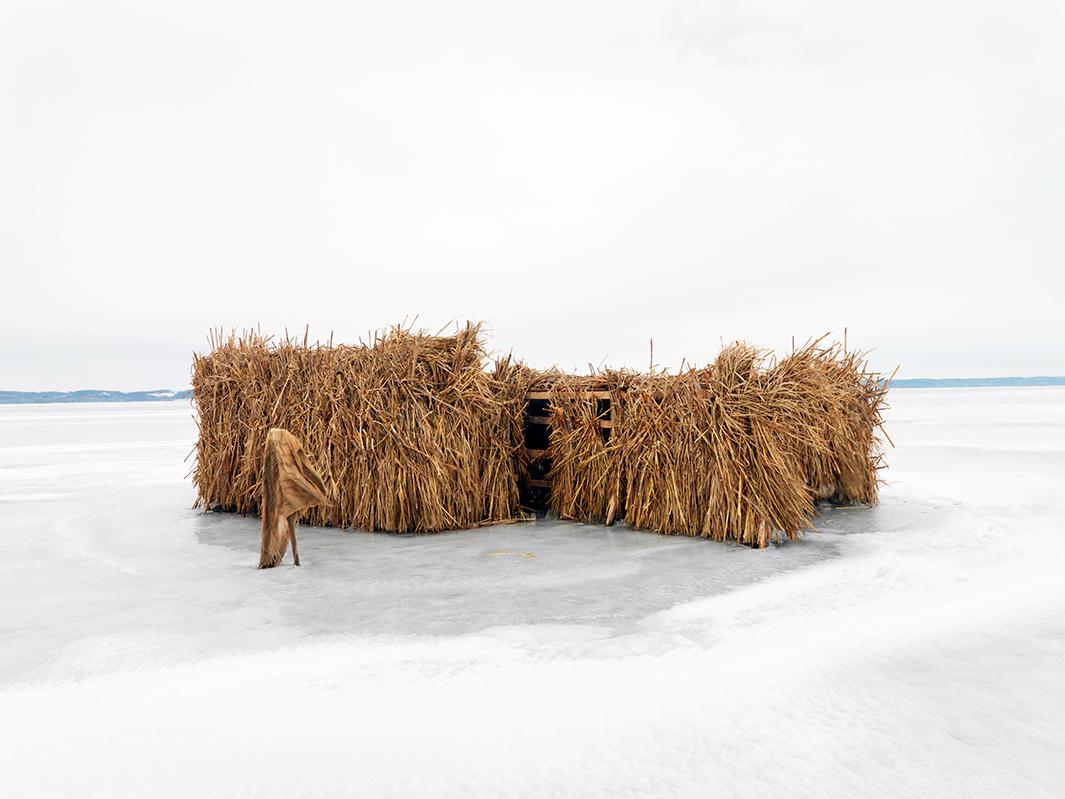
Dave Jordano
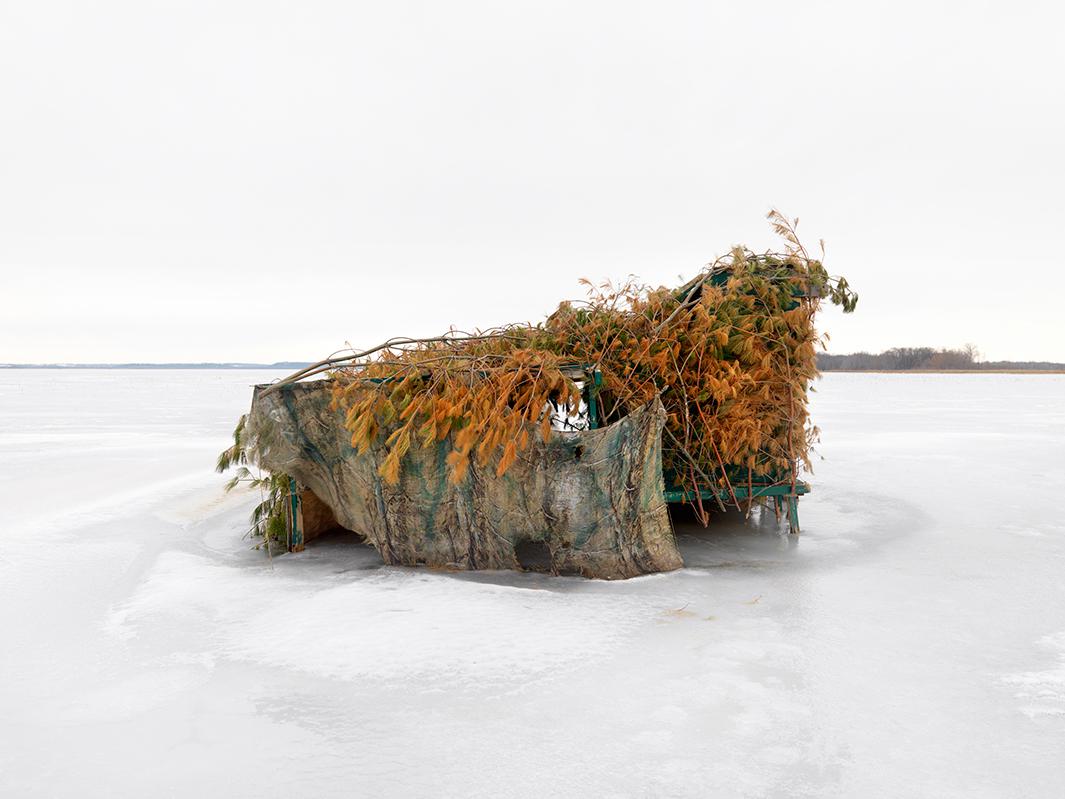
Dave Jordano
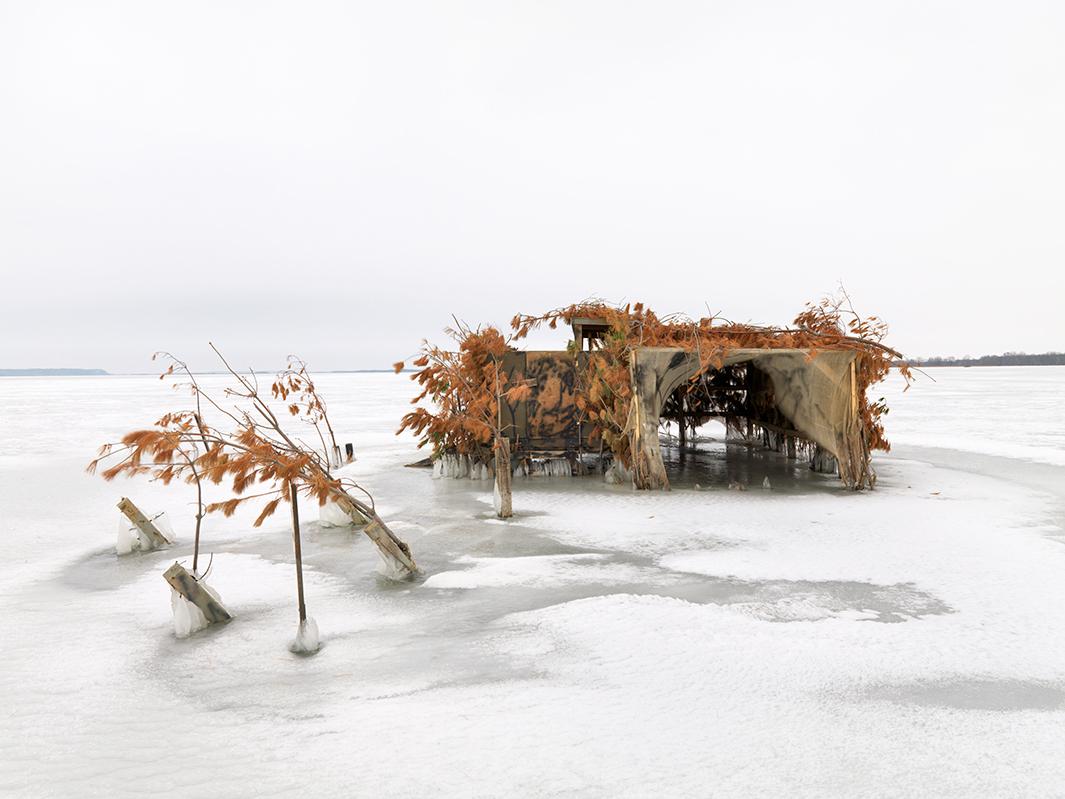
Dave Jordano
The lighting and weather conditions of the day make Jordano’s photos resemble studio shots. “The light was consistent, the background was neutral and kind of blown out,” he said. “In this sense they’re isolated a bit more because of the ice and snow. It kind of separates them. It’s like a white backdrop.”
These duck blinds, Jordano said, were permanent structures that were registered and monitored through the Department of Natural Resources. Shortly after Jordano photographed them, however, the DNR required that they be dismantled before the beginning of the next hunting season so permits could be issued for new temporary structures.
“All the blinds I photographed were probably gone the next season.”

Dave Jordano
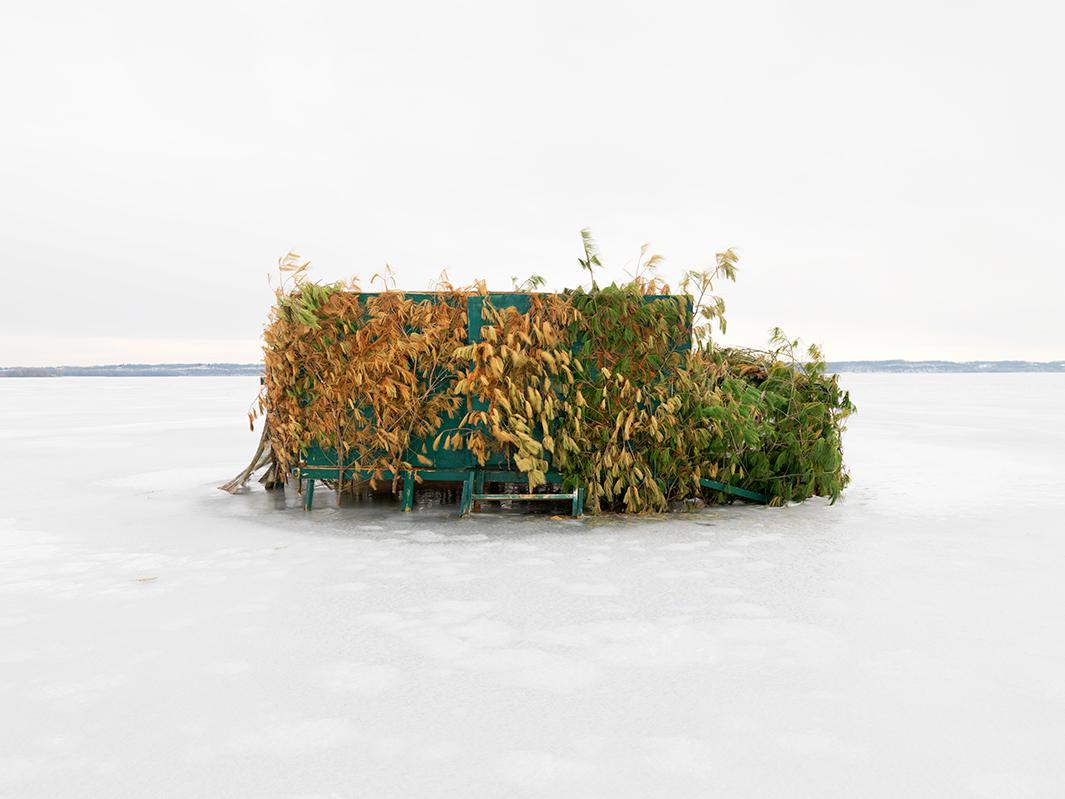
Dave Jordano
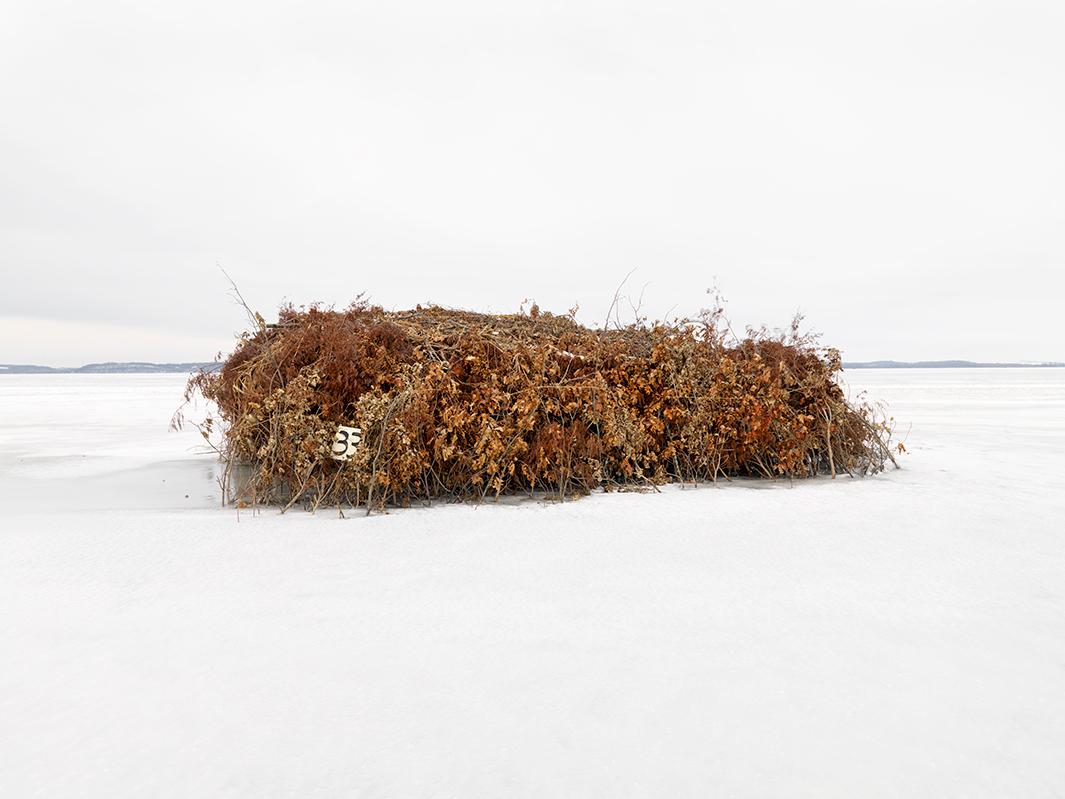
Dave Jordano
